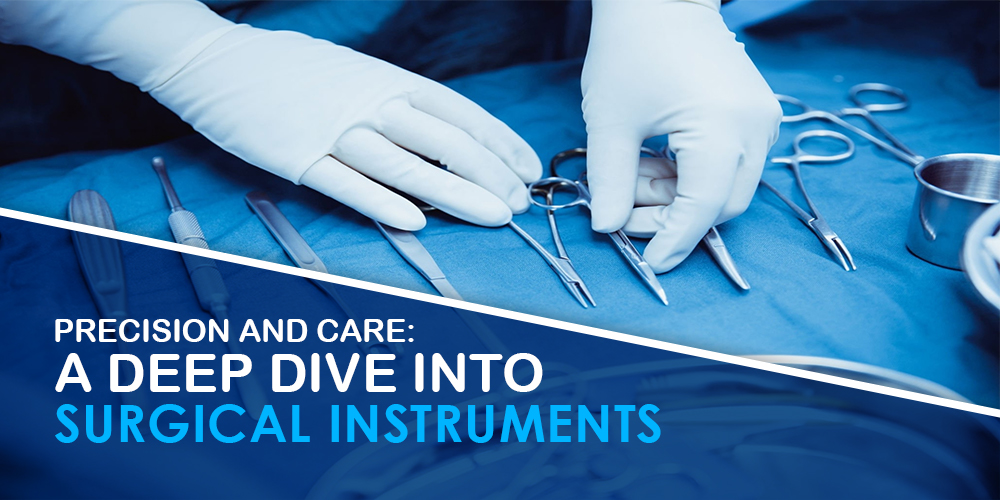In the world of medicine, surgical instruments are the unsung heroes, enabling surgeons to perform intricate procedures with precision and care. Each tool plays a vital role in ensuring patient safety and achieving successful outcomes. This post explores the history, types, maintenance, and innovations in surgical instruments, shedding light on their essential function in modern healthcare.
1. History of Surgical Instruments
The use of surgical instruments dates back thousands of years. Ancient civilizations, such as the Egyptians and Greeks, utilized rudimentary tools made from stone and bronze. The introduction of metal instruments marked a significant advancement. Notable milestones include:
- Hippocratic Era (circa 400 BC): Development of scalpels and forceps.
- Middle Ages: Surgeons began to standardize instruments, improving their effectiveness.
- 19th Century: The advent of anesthesia and antiseptics led to more complex surgical procedures and a greater variety of instruments.
2. Types of Surgical Instruments
Surgical instruments can be categorized based on their function. Here are the main types:
Cutting Instruments
- Scalpels: Sharp blades used for incisions; available in disposable and reusable forms.
- Scissors: Different types, including Mayo and Metzenbaum scissors, designed for cutting tissues and sutures.
Grasping Instruments
- Forceps: Used to hold, grasp, or manipulate tissues; examples include tissue forceps and hemostatic forceps.
- Clamps: Used to occlude blood vessels or tissues during surgery.
Hemostatic Instruments
- Hemostats: Essential for controlling bleeding; commonly used to clamp blood vessels.
- Suction Devices: Help maintain a clear surgical field by removing blood and fluids.
Suturing Instruments
- Needle Holders: Designed to securely hold needles during suturing.
- Sutures: Various materials and types used to close wounds or surgical incisions.
3. Materials and Design
The materials used in surgical instruments significantly impact their functionality and longevity. Common materials include:
- Stainless Steel: Resistant to corrosion and easy to sterilize, making it ideal for most instruments.
- Titanium: Lightweight and strong, often used in specialized instruments.
Design considerations are crucial for effectiveness. Ergonomic designs reduce surgeon fatigue and improve precision, allowing for better control during delicate procedures.
4. Maintenance and Sterilization
Proper maintenance and sterilization of surgical instruments are vital to prevent infections and ensure patient safety. Key practices include:
- Cleaning: Instruments should be cleaned immediately after use to remove blood and tissue residues.
- Sterilization: Common methods include autoclaving (steam sterilization) and chemical sterilization. Each instrument must be thoroughly sterilized before its next use.
- Inspection: Regular checks for damage or wear are essential to maintain instrument integrity.
5. Innovations in Surgical Instruments
Advancements in technology have revolutionized the field of surgery. Some notable innovations include:
- Robotic Surgery: Instruments controlled by robotic systems allow for minimally invasive procedures with enhanced precision.
- 3D Printing: Custom surgical instruments can be created to meet specific patient needs, improving outcomes.
- Smart Instruments: Integration of sensors and technology to monitor surgical parameters in real-time.
6. Training and Skill Development
The proficiency of surgeons and their teams in using surgical instruments is critical for successful outcomes. Training typically includes:
- Hands-On Practice: Medical students and residents practice on simulators and cadavers to gain familiarity with various instruments.
- Continuing Education: Ongoing training helps experienced surgeons stay updated on new tools and techniques.
Conclusion
Surgical instruments are indispensable in the operating room, combining precision, care, and innovation to enhance patient outcomes. Understanding their history, types, maintenance, and advancements not only appreciates these tools but also emphasizes the critical role they play in healthcare.
Call to Action
We invite readers to share their experiences with surgical instruments or ask questions about the tools they’ve encountered. For those interested in further exploration, consider diving into resources that detail specific instruments or surgical techniques.




 08:30 – 13:00 | 13:30 – 17:00
08:30 – 13:00 | 13:30 – 17:00




Lorem Ipsum has been the industry’s standard dummy text ever since the 1500s, when an unknown printer took a galley of type and scrambled it to make a type specimen.